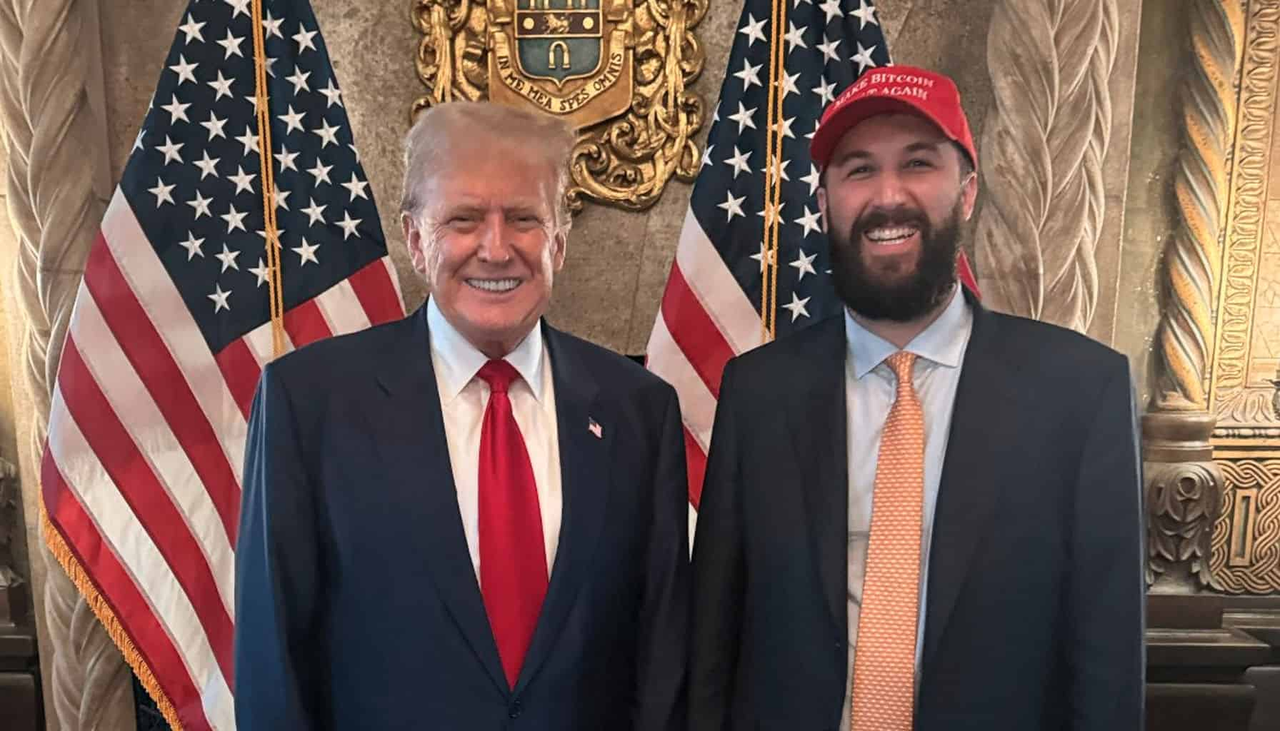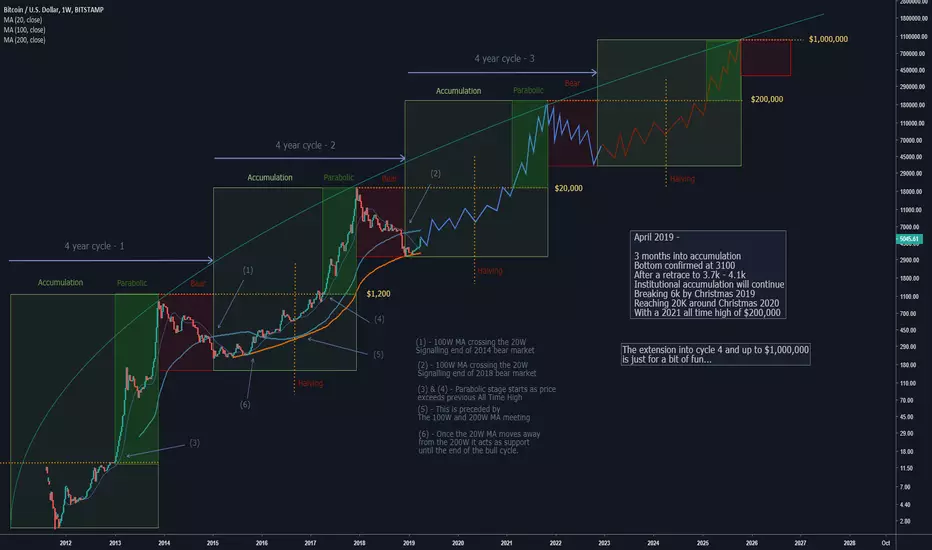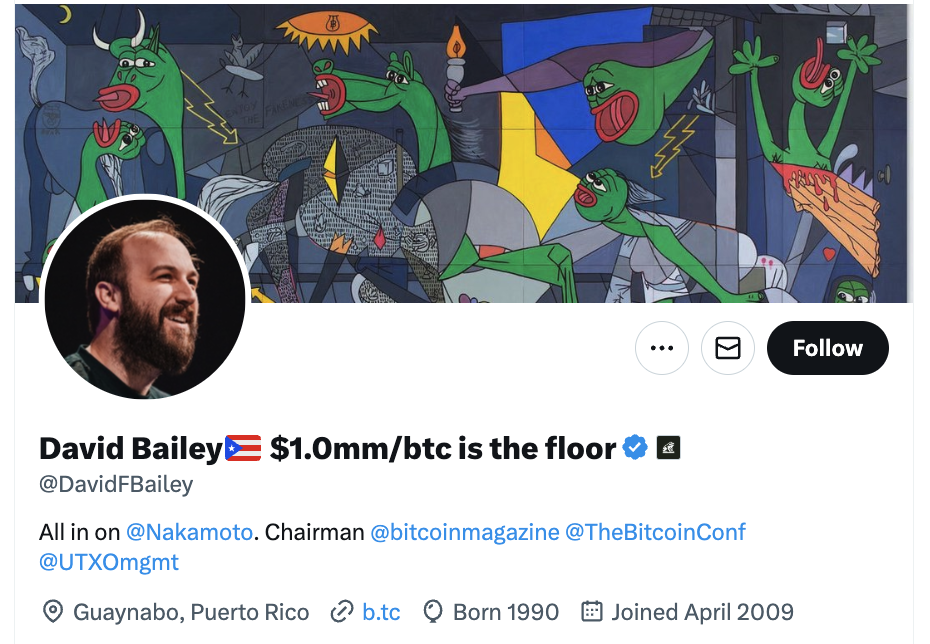From personal beliefs to business strategy, from technological innovation to the reconstruction of power, this conversation reveals David Bailey's grand plan to reshape the global financial landscape.
Author: Lesley Source: MetaEra The Web 3.0 strategies and plans of publicly listed companies have become a hot topic of increasing public interest. Against this backdrop, MetaEra has officially launched its "Crypto Stock Executive Interviews" series. We will speak with leaders of companies that are pioneering digital transformation. Through the perspective of decision-makers, we'll delve into their strategic plans, business innovations, and financial innovations, providing forward-looking insights for industry participants.

On August 14th, KindlyMD, Inc. (Nasdaq: NAKA) announced the completion of its merger with Nakamoto Holdings Inc., a Bitcoin-native holding company. The merged company will continue to trade on the Nasdaq Capital Market under the ticker symbol "NAKA." The transaction raised approximately $540 million through a PIPE financing, with the proceeds primarily used to purchase Bitcoin. As Nakamoto CEO David Bailey stated, "Our vision is to enable global capital markets to operate under the Bitcoin standard. Today's merger marks the beginning of this journey." This ambitious plan underlies a broader strategic blueprint: achieving what Bailey calls "hyperbitcoinization" by acquiring and establishing Bitcoin treasury companies in 80 capital markets worldwide.

This is an edited version of an interview with Nakamoto CEO David Bailey. MetaEra has carefully translated and edited the content to provide readers with a more comprehensive understanding of the Bitcoin industry veteran's vision, strategy, and global expansion plans for digital assets and his company, Nakamoto.
In this in-depth conversation, David Bailey not only shared his legendary journey from his initial introduction to Bitcoin in 2012 to his six visits to the White House within a year, but also elaborated on his bold predictions for Bitcoin's future trends and how Nakamoto, through his innovative "Bitcoin per Share" metric and global presence, is redefining how institutional investors participate in the Bitcoin market. From personal conviction to business strategy, from technological innovation to the restructuring of power, this conversation reveals a grand plan that is reshaping the global financial landscape.
The rise of Bitcoin: From fringe to mainstream in 13 years
In November 2012, college student David Bailey received an article about Bitcoin from a friend. A devoted Ron Paul supporter and adherent of the Austrian School of Economics, Bailey's initial reaction was: This must be a scam. "Given my personality, my instinct was to prove it to my friends," Bailey recalls. However, as he delved deeper into the subject, he found himself unable to identify any reason why Bitcoin couldn't succeed.
This discovery completely changed his perspective. "If there's a one-in-a-million chance of it working, it's worth a try because it's the best idea ever—it disrupts all money, all value, everything," Bailey said. From then on, he bought his first Bitcoin and became "completely addicted," even dropping out of school.
This obsession propelled Bailey on a remarkable journey. In the first two or three years, he visited Bitcoin conferences and meetups around the world. "What's interesting is that no matter where I go, each place has a different story about how it became associated with Bitcoin," Bailey observed. Every place in the world has its own unique reasons for embracing Bitcoin.

Bitcoin Conference hosted by BTC Inc (Source: BTC Inc official website)
Bailey's experience attending conferences around the world convinced him that Bitcoin's time had arrived. "Once you hear these stories, you realize that what we imagined is becoming reality. This is something the world needs."
Thirteen years later, Bailey's role has undergone a dramatic transformation. "I've been to the White House six times this year," he revealed in an interview. The former college dropout now discusses Bitcoin policy with the President of the United States, and his business partner has dined with the Chairman of the Securities and Exchange Commission. "When the United States launched its Strategic Bitcoin Reserve, we heard news that governments around the world were working to purchase Bitcoin."
This shift isn't just reflected in Bailey personally; it also reflects the broader transformation of the Bitcoin ecosystem. From Wall Street to government agencies, from traditional financial giants to sovereign wealth funds, a growing number of institutional players are embracing Bitcoin, once considered a "rebel asset."
However, Bitcoin's mainstream adoption has also been accompanied by cultural controversies. Bailey acknowledged the shift, stating, "The shift in Bitcoin culture from anti-mainstream cypherpunks to suit-and-tie elites is undeniable." At a recent Bitcoin conference, the noticeable increase in suit-and-tie attendees has unnerved some established Bitcoin believers.

David Bailey and US President Trump (Source: Bitcoin Magazine)
"I almost never wore a suit in my life until I started dealing with President Trump—you have to wear a suit when you meet the president," Bailey explained. But he emphasized that this outward change didn't mean a compromise of Bitcoin's core philosophy: "Everything we think about Bitcoin is a projection of our own worldview onto it. Bitcoin is just code, and code doesn't change."
Bailey believes that what's happening in the world today isn't Wall Street taking over Bitcoin, but rather Bitcoin taking over Wall Street . "Just because we put on suits and walk into Wall Street offices and ask them to buy Bitcoin doesn't mean we're giving in. Let's be clear, they're the ones buying Bitcoin. They're the ones bending the knee to Bitcoin."
This reshaping of power structures is accelerating globally. Bailey revealed that British politician Nigel Farage recently contacted them about establishing a strategic Bitcoin reserve in the UK. "One by one, as the dominoes fall, the chain reaction is accelerating."
From a Bitcoin skeptic in 2012 to a White House regular in 2025, Bailey's personal trajectory epitomizes Bitcoin's rise from the fringe to the mainstream. This isn't just a personal story of growth; it's also a revolutionary process redefining the global financial order. As Bailey puts it, "In five years, every government on Earth will own Bitcoin. In five years, Bitcoin holders will become the most powerful political faction in the world."
Nakamoto Strategy: 80 Bitcoin Treasury Companies Driving Hyperbitcoinization
When asked why he chose a Bitcoin Treasury Company over an ETF as the vehicle for his "Hyperbitcoinization" strategy, David Bailey didn't hesitate to get to the heart of the matter: "ETFs are strictly limited in their functionality; they're merely a proxy for Bitcoin. Creating and operating a company gives us the ability not only to accumulate Bitcoin on our balance sheet, but to actually utilize it—we can make Bitcoin function like any other asset."
This strategy stemmed from an unexpected discovery. About a year earlier, Bailey and his team had invested in Metaplanet, a Japanese hotel company listed on the Tokyo Stock Exchange. At the time, the company had a market capitalization of just $15 million and was considered a "zombie company"—essentially, a dying business. "Six of us friends got together and invested $6 million in this company," Bailey recalls. After the deal closed, the company's valuation rose to $21 million, and they've since witnessed an almost unbelievable growth trajectory: "We watched the company go from $21 million to $50 million, to $100 million, to $200 million, to $500 million, to $1 billion, to $2 billion, to $5 billion, to $5 billion, and finally to $6 billion, and then to $7 billion."
This inflated valuation led Bailey to a key insight: the shareholders buying Strategy stock came from a completely different background than those buying Metaplanet. “They were Japanese, which is obvious—it’s a Japanese stock, so of course the investors are Japanese. But what we overlook is that people living in a certain region are often more willing to buy shares in companies from their own country.”
Inspired by this discovery, Bailey began to think about how to replicate this success globally. He proposed an ambitious strategic plan: “We should implement this model in more places. In fact, we should do this in every capital market on the planet.”
“This is a global phenomenon,” Bailey emphasized. “We need to have Bitcoin treasury firms in every capital market – there are 80 different capital markets in the world, and we need to have at least one Bitcoin treasury firm in each of those 80 markets, buying Bitcoin and building a shareholder base in their countries to bring Bitcoin to their markets.”
Bailey further explained, "Our goal is to make Bitcoin purchases just one click away for every investor. We hope to raise a Bitcoin treasury in the United States and use this Bitcoin to provide seed capital for Bitcoin treasury companies around the world to acquire 80 publicly listed companies in the global capital markets. Then, 80 CEOs will lead 80 investor relations teams to go door-to-door in their countries to raise funds to purchase Bitcoin, allowing Bitcoin's orange color to illuminate the world through the capital markets."
Beyond the treasury company network, Nakamoto’s strategy also includes building a complete ecosystem for Bitcoin adoption. Bailey observed that many companies need similar support services:
Educational content services: For example, Metaplanet partnered with Bitcoin Magazine to provide Japanese-language Bitcoin news and educational content to the Japanese market.
・Custody service: All companies need to store Bitcoin securely after purchasing it;
・Brokerage services: Brokerage services that help companies purchase Bitcoin.
Bailey describes this as a "full service": "Any company in the world that wants to get into Bitcoin can contact us and we'll handle everything from start to finish. It's very simple." This service suite is unique in that there are currently very few companies focused on helping businesses adopt Bitcoin. "Think about how many companies focus on helping individuals buy Bitcoin, and how few focus on helping businesses buy Bitcoin," Bailey added.
Bailey is convinced this strategy is just the beginning. As more governments begin to buy Bitcoin, Nakamoto is preparing for the next phase. “Governments may need a product like this in the future,” he said.
Bailey's ultimate vision is to achieve "HyperBitcoinization"—a world where Bitcoin becomes the standard for every financial transaction, enabling every person, computer, machine, and AI on Earth to transact in Bitcoin. When asked if this is even achievable, Bailey answered without hesitation, "It's 100% going to happen." His logic is simple yet powerful: "As people gradually abandon the old system, the forces supporting it will dwindle. When no one supports the old system anymore, the political class will naturally abandon it. If the system recommended by the political class is not even used by anyone, then what is the point of that system?"
Through its strategic presence in 80 capital markets around the world, Nakamoto is not only redefining institutional investment methods, but also laying the foundation for a new financial world centered on Bitcoin.
Financial Innovation Revealed: How Bitcoin Per Share Changes the Market
In traditional investment circles, investors are accustomed to measuring corporate value through financial indicators such as earnings per share and price-to-earnings ratios. However, Nakamoto is more focused on a disruptive concept: "Bitcoin per share." This innovative metric is redefining how institutional investors measure value creation and introducing a new measurement standard to the Bitcoin market.
David Bailey illustrates this revolutionary concept with a simple example: "Suppose I have 1,000 bitcoins on my balance sheet, but the market values my company at 2,000 bitcoins, even though I only actually own 1,000. In this case, even though the market valuation is higher than the actual number of bitcoins I hold, the company can raise capital by issuing shares to purchase more bitcoins." This gives rise to the concept of "dilution." Bailey points out that the key is to distinguish between "good dilution" and "bad dilution."
“‘Dirty dilution’ is when I sell my shares to buy more Bitcoin, and in the process you as a shareholder own less Bitcoin. ‘Good dilution’ is when the company sells shares to buy Bitcoin, and the number of Bitcoins owned by shareholders actually increases.”
One of Nakamoto's core missions is to ensure that the number of Bitcoins per share continues to grow. Bailey emphasized, "Our goal is to keep that number climbing. If I can't do that, it means I'm wasting your money—you might be more effective buying Bitcoin yourself and holding it than doing it through us."
Compared to individual investors, corporate structures offer significant advantages in debt financing. Bailey recounted this through personal experience: "Our bank account was closed three times, and I couldn't possibly borrow $1 million from the bank. But after becoming a public company, within a week of being approved, someone lent us $200 million at 0% interest." Individual investors typically face high financial barriers, while corporations face virtually no such restrictions.
Through its unique corporate structure, Nakamoto not only secures capital at a lower cost, but also raises capital on a larger scale, leveraging it to increase the amount of Bitcoin held per share for shareholders. The corporate structure also offers the advantage of debt financing, Bailey explained. Individual investors seeking leverage in Bitcoin typically need to hold their Bitcoin in a custodian, exposing them to liquidation risk. However, through a corporate structure, the company can employ various financing strategies, ensuring that Bitcoin is never subject to liquidation risk. Furthermore, the corporate structure offers significant tax advantages. While Bailey didn't delve into this, he mentioned that corporate Bitcoin holdings offer greater tax flexibility than individual investors.
These structural advantages—from cheaper access to capital and debt financing without liquidation risk to tax optimization and the ability to raise capital at scale—taken together form the foundation of Nakamoto’s strategy. As Bailey summarized, “We will use every tool in our toolbox to accumulate Bitcoin as quickly as possible.”
By leveraging the innovative financial metric of Bitcoin per share, Nakamoto is not only redefining the measurement of value creation but also providing a new framework for institutional investors to participate in the Bitcoin revolution with unprecedented efficiency. This financial innovation is gradually changing the rules of the game and paving the way for the ambitious goal of "Hyperbitcoinization."
Supercycles and Million-Dollar Prophecies: How Bitcoin Reshapes Global Power
When David Bailey was asked whether Bitcoin had entered the fabled "supercycle," his response was both cautious and confident: "It's a profound question, so profound that I could write a book about it," Bailey said. However, he then offered a view that subverted conventional wisdom, pointing out that the changes in the Bitcoin market completely defy the traditional four-year cycle theory.
The End of Bitcoin’s Traditional Four-Year Cycle Theory

Bitcoin's four-year cycle theory (Source: Trading View)
Traditional Bitcoin cycle theory posits that within 18 months of each halving, Bitcoin prices peak, followed by a year of exponential growth, a year of decline, and a year of sideways trading. However, Bailey believes the current market environment has fundamentally changed. He noted, "When I look at the buyer base entering the market—institutions, ETFs, governments—the scale of the money coming in is enormous. I've never seen anything like this in my lifetime."
More crucial is the change in how funds are deployed. Unlike some retail investors who go all-in on Bitcoin, institutional investors typically adopt a more systematic strategy: "Their capital deployment isn't a one-time effort, but rather a phased approach, typically with a 12-month, two-year, or even four-year horizon, and they adjust their portfolios over time."
Bailey further explained that according to traditional cycle theory, the 2024 halving means that the Bitcoin bull market should end at the end of 2025 or mid-2026. However, the scale of capital inflows far exceeded expectations, leading him to believe that "capital inflows are unlikely to peak in the next 6 to 8 months."
Millions of dollars in Bitcoin are not the end.
When discussing Bitcoin's long-term value, Bailey offered a striking observation: "The long-term value of one Bitcoin is one-21 millionth of anything else." This implies that Bitcoin's ultimate value will transcend any specific dollar figure. However, Bailey also clearly identified a specific short-term goal: "A floor for Bitcoin will be $1 million in my X account." This prediction is based on a simple comparison: if Bitcoin's market capitalization were equal to that of gold, then the price of Bitcoin would be $1 million per coin. In other words, "If Bitcoin is superior to gold in every way, then its value cannot be less than $1 million."

David Bailey's X account (Source: X platform)
When asked when Bitcoin would reach $1 million, Bailey responded without hesitation: "I think the price of one Bitcoin will exceed $1 million by 2030." His confidence in this prediction stems from his deep insight into the relationship between market supply and demand: "The United States is considering purchasing 200,000 Bitcoins annually for four consecutive years. When a country purchases Bitcoin on such a large scale, a bear market is almost impossible - this purchase volume far exceeds the annual production of Bitcoin. From a mathematical point of view, a bear market is simply impossible."
The fundamental reshaping of power structures and the ultimate vision of “HyperBitcoinization” Bailey
His vision for Bitcoin's future goes far beyond financial investment; he sees a profound revolution in power. "When governments control currency, they control the entire world's power structure," he says. "Once this turning point arrives—when people gain control of their currency—our understanding of society and the world will undergo a profound transformation."
This transformation is happening gradually through infiltration. Bailey noted that Bitcoin supporters have already entered various institutions of power: "There are Bitcoin supporters in the White House, there are Bitcoin supporters at the Federal Reserve, there are Bitcoin supporters in the leadership of Hong Kong, China, and even Saudi Arabia. We are all working together to advance this goal."
Bailey’s vision of “hyperbitcoinization” implies 100% global Bitcoin adoption—“a future where every person, every computer, every machine, every AI on Earth will be using Bitcoin for financial transactions and payments.”
Bailey is confident about this goal: "As more and more people abandon the traditional monetary system, supporters of the old system will gradually disappear. When no one serves the old system anymore, the political class will be unable to maintain the existing system. To put it in an extreme way, if there is no one to exploit, what is the point of the system existing?"
Bailey likened this process to "swallowing": "Bitcoin supporters on Wall Street, Bitcoin supporters in the corporate world, they started holding Bitcoin on their balance sheets. Now they are helping companies like us acquire other public companies and put Bitcoin on their balance sheets."
Summary: Bitcoin Treasury Strategy Will Promote the Reshaping of the Global Financial Order
As a staunch believer in Bitcoin, Bailey pursues not only its meteoric rise in value but also a fundamental reshaping of the global financial structure. He firmly believes that the next five years will be a pivotal moment for Bitcoin's transition from early adopter status to mainstream adoption, much like the explosive growth of the internet in 1997. "In five years, Bitcoin will be a technology used by every young person in the world," he predicts.
This is not just a story about technology adoption, but also a great narrative about the reorganization of global power. In his view, the popularization of Bitcoin will completely break the traditional financial system and become the core driving force for the redistribution of power and wealth.
Throughout this process, Bailey's strategic approach—building a localized Bitcoin treasury by acquiring publicly listed companies in 80 global capital markets—brought a fresh perspective to the capital markets. His goal was to put Bitcoin within reach of every investor, a localized approach that would drive global adoption more effectively than any other cross-border investment vehicle.
The merger between Nakamoto and KindlyMD is undoubtedly a significant step forward in this strategy. Nakamoto will use the $540 million raised through PIPE financing to purchase Bitcoin. This not only serves as a test case for Bailey's plan to expand into 80 publicly traded companies globally, but also provides strong evidence of Bitcoin's entry into the institutional investment market. This initiative clearly demonstrates that Bitcoin can successfully reach new heights by leveraging the power of traditional capital markets.
Bailey firmly stated: "Everything has just begun." This sentence is not only a declaration of the future Bitcoin revolution, but also a preview of a new world where Bitcoin dominates the future of finance.
The implementation of this strategy not only reflects Bailey's personal vision but also foreshadows the impending structural transformation of the digital currency ecosystem. When 80 global capital markets begin to collectively pursue the vision of "HyperBitcoinization," we may truly witness the advent of a new financial order—a new era in which Bitcoin reshapes the global financial landscape. The wheel of history is turning, and Bailey and his Nakamoto are attempting to be the drivers of this change.
Original interview link: Why Bitcoin is hitting $1 million by 2030 with David Bailey https://www.youtube.com/watch?v=gK73XJiQ6l4






